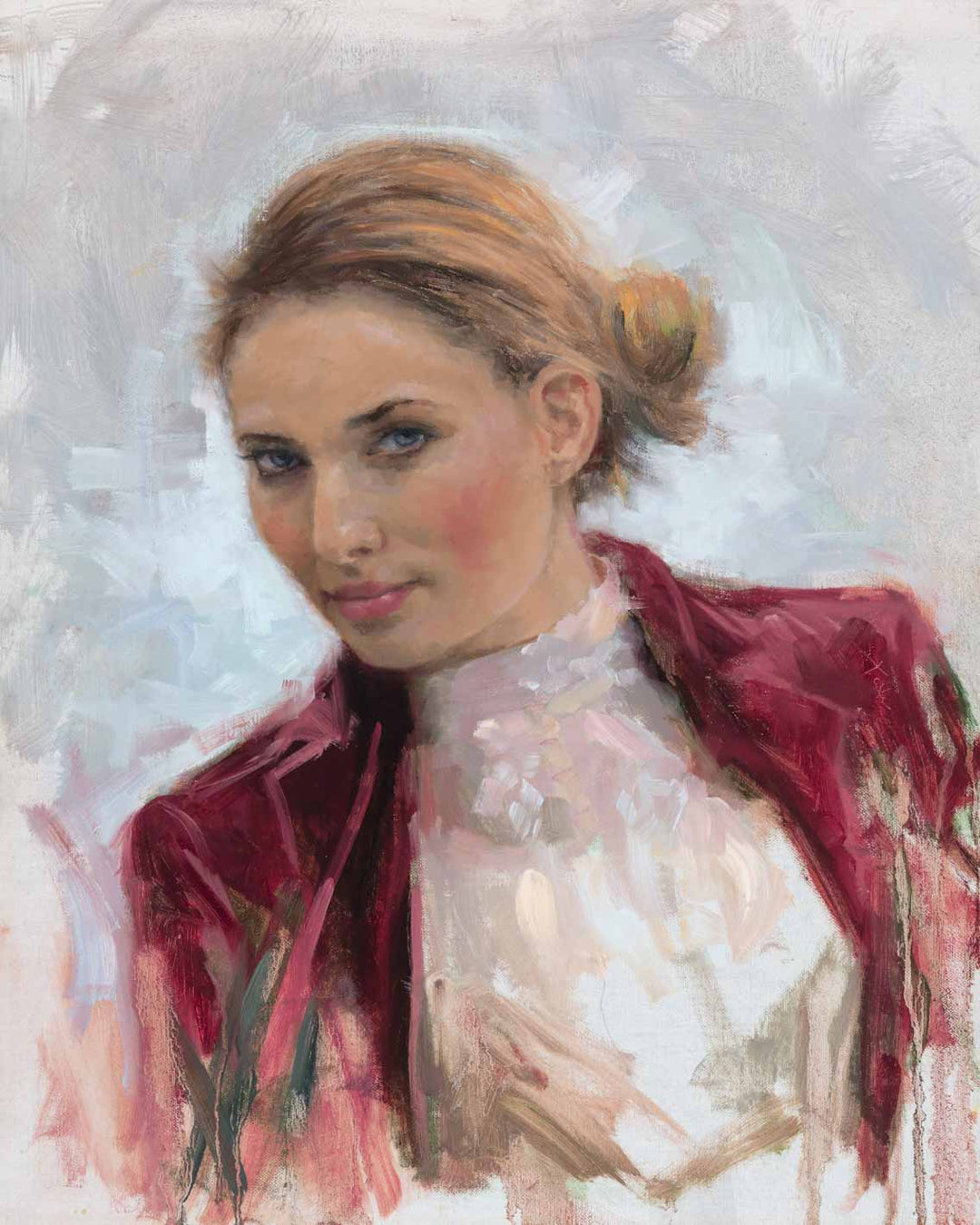Oil Paintings for Sale to Elevate Any Interior Space
Oil Paintings for Sale to Elevate Any Interior Space
Blog Article
Checking out All Regarding Oil Paintings: A Guide to Comprehending Their Charm and Value
Oil paints have mesmerized audiences for centuries, offering a glimpse right into the imaginative proficiency of different ages. Their rich background is linked with ingenious techniques and profound emotional expression. Recognizing the products and techniques behind these artworks can enhance gratitude. Additionally, the marketplace for oil paints provides opportunities for investors and collectors alike. As one discovers this interesting globe, the concern arises: what makes an oil paint really valuable?
The Background of Oil Paint: A Trip With Time
Oil painting has origins that date back to ancient times, it truly prospered throughout the Renaissance, when artists uncovered its flexibility and abundant color possibility. Early examples can be mapped to the 7th century, with methods developing especially across societies. The medium ended up being prominent in Northern Europe in the 15th century, specifically through the jobs of musicians like Jan van Eyck, that spearheaded its usage for comprehensive realism and vivid shades. This duration marked a departure from tempera paints, permitting better depth and appearance. As oil painting spread, it influenced many artists, causing work of arts by renowned figures such as Leonardo da Vinci and Rembrandt. The tool's heritage continues, shaping the art globe well right into modern times.
Comprehending Oil Repaints: Products and Techniques
As artists check out the globe of oil paints, they run into a diverse range of materials and methods that specify this tool. The primary elements of oil paint include pigments, which supply shade, and drying out oils, such as linseed, that bind the pigments and facilitate application. Different additives can customize the paint's appearance and drying out time, enhancing adaptability. Strategies like glazing, where clear layers are developed, and impasto, which involves applying thick paint, permit different visual effects. Furthermore, the usage of brushes, scheme blades, and also fingers can develop one-of-a-kind textures and finishes. Comprehending these products and strategies makes it possible for musicians to completely reveal their imagination and accomplish the preferred effect in their art work.
The Function of Color in Oil Paintings
Color plays a pivotal duty in oil paints, affecting both aesthetic appeal and emotional vibration. Comprehending color theory essentials, including the relationships in between hues, can enhance a musician's capacity to convey state of mind and ambience. In addition, understanding shade mixing techniques allows for better deepness and splendor in a paint's scheme.

Shade Concept Fundamentals
Recognizing color theory is essential for musicians functioning with oil paints, as it forms the structure for developing visually engaging and harmonious compositions. Shade concept includes the research study of exactly how colors interact, the color wheel, and the partnerships between main, secondary, and tertiary shades. Artists make use of complementary shades to improve contrasts and create focal points, while comparable shades promote unity and cohesiveness within an item. Furthermore, the concepts of cozy and amazing colors affect the perception of deepness and area in a paint. Comprehending these concepts enables musicians to control color effectively, leading the customer's eye and communicating their designated message. Proficiency of color concept ultimately enhances a musician's ability to communicate feelings and ideas with their work.
Psychological Impact of Shade
The emotional influence of color in oil paints plays a vital role in just how audiences connect and view with artwork. Colors stimulate particular sensations and moods, influencing the visitor's mood. Cozy tones like reds and oranges can create a sense of heat and energy, while awesome tones such as blues and greens frequently stimulate calmness or introspection. Artists purposefully select shade palettes to boost narrative aspects, assisting the audience's psychological trip. The saturation and contrast of colors even more magnify these effects, attracting attention and producing emphasis. Ultimately, the interplay of colors in oil paintings not just boosts their visual allure however likewise works as a powerful medium for emotional expression, enriching the viewer's experience and interpretation.
Color Mixing Techniques
While many facets of oil paint add to the total make-up, grasping color mixing strategies is crucial for attaining wanted impacts and depth. Shade mixing can be approached via numerous techniques, including the subtractive and additive processes. Additive mixing involves incorporating shades of light, while subtractive mixing depends on pigments, where shades blend to develop new shades. Musicians commonly make use of a minimal combination to create unified works, understanding the partnerships between key, additional, and tertiary shades. Methods such as glazing and scumbling further enhance deepness and luminosity. By skillfully blending colors, an artist can stimulate feelings, produce centerpieces, and attain a feeling of realism, ultimately boosting the painting's emotional and aesthetic influence.
Famous Oil Painters and Their Iconic Works

Famed for their proficiency of shade and technique, oil painters have developed some of the most popular artworks in history. Prominent artists like Vincent van Gogh mesmerized target markets with his emotive brushwork in "Starry Night," while Claude Monet's "Perception, Daybreak" laid the foundation for Impressionism. Leonardo da Vinci's "Mona Lisa" remains an enduring icon of artistic brilliant, showcasing his ability in catching human expression. At the same time, Rembrandt's "The Evening Watch" shows his cutting-edge usage of light and shadow. Other significant numbers consist of Pablo Picasso, that revolutionized contemporary art with his strong testing in works like "Les Demoiselles d'Avignon," and Georgia O'Keeffe, whose vibrant representations of landscapes and blossoms assisted specify American modernism. Each artist's special design contributed substantially to the oil paint landscape.
Exactly how to Evaluate the Quality of an Oil Painting
Evaluating the top quality of an oil paint includes a careful assessment of workmanship methods, in addition to an evaluation of shade and structure. Observing brushwork, layering, and the application of paint can reveal the musician's ability level. In addition, the interaction of colors and the total plan of elements add considerably to the paint's aesthetic worth.
Examining Craftsmanship Strategies
A careful evaluation of workmanship methods is vital for identifying the top quality of an oil painting. Evaluators need to first take a look at the application of paint; thick, textured brushstrokes might suggest an experienced hand, while extremely uniform applications can suggest a lack of deepness. oil paintings for sale. The layering technique is additionally important; the visibility of glazes and differed thickness can improve luminosity and complexity. In addition, the quality of the products made use of, such as the canvas and pigments, plays a considerable duty in sturdiness and total visual. Interest to information in aspects like edges and changes between shades shows the musician's dedication to their craft. Eventually, these techniques add to the painting's psychological impact and market price, serving as indicators of the artist's ability and intent
Examining Color and Make-up
While reviewing the high quality of an oil painting, one need to focus on the interaction of shade and structure, as these components are essential to the art work's overall influence. Color options can evoke feelings and establish state of mind; for that reason, the musician's palette must be analyzed for consistency and comparison. A well-balanced make-up guides the visitor's eye and creates a sense of unity. Musicians frequently utilize strategies like the rule of thirds or leading lines to improve aesthetic passion. Additionally, the usage of light and shadow can add deepness, enhancing the three-dimensionality of the painting. Ultimately, a successful oil paint weds shade and structure, involving the customer and welcoming a deeper appreciation of the artist's vision and technique.
Taking care of and Preserving Oil Paintings
Correct treatment and conservation of oil paintings is vital for maintaining their integrity and long life. To shield these art work, it is crucial to show them far from direct sunshine, which can cause fading and staining. Keeping a steady atmosphere with regulated temperature and humidity additional aids in preventing damages. Cleansing should be done gently making use of a soft, dry cloth, avoiding any kind of severe chemicals that could damage the paint or varnish. Routine evaluations for indicators of damage, such as cracking or flaking, are recommended. When moving or keeping oil paints, appropriate cushioning and framing are necessary to prevent physical injury. Eventually, attentive treatment adds to the aesthetic charm and worth of oil paints gradually.
The Marketplace for Oil Paintings: Investing and collecting
Understanding the market dynamics for oil paintings is vital for investors and collection agencies alike. The worth of these artworks is affected by different variables, including the musician's reputation, historical value, and current patterns. Enthusiasts frequently look for items that reverberate directly while considering prospective admiration in value. Auctions and galleries offer as key venues for trading, with costs varying based upon need and rarity. Buying oil paintings calls for research study right into the market, in addition to an understanding of authenticity and provenance. Furthermore, arising artists might use possibilities for substantial returns, while established names can command high costs. Generally, a critical approach to collecting can yield both aesthetic pleasure and financial rewards.

Often Asked Questions
What Are the Ecological Effects of Oil Painting Products?
The environmental influences of oil painting materials consist of the release of unpredictable organic substances (VOCs), dangerous waste generation, and resource extraction for pigments. These aspects contribute to air pollution and ecological destruction, increasing problems among eco mindful musicians and consumers.
Just How Do Different Canvases Influence Oil Painting Outcomes?
Different canvases influence oil paint results considerably. Absorbency, texture, and surface high quality can modify paint application, drying times, and shade vibrancy. Musicians commonly select details canvases to achieve wanted effects and improve their imaginative expression.
Can Oil Paintings Be Restored if Harmed?
Oil paints can certainly be brought back if harmed. Professional conservators make use of various techniques to repair tears, clean surface areas, and address staining, making sure that the art work maintains its initial elegance and worth for future generations.
What Are the Signs of an Original Oil Paint?
The indicators of an initial oil painting consist of visible brush strokes, texture variations, and an uneven canvas weave (oil paintings for sale). Additionally, credibility might be verified through provenance, trademarks, and the existence of a varnish layer distinct to oil tools
Exactly How Has Technology Influenced Modern Oil Paint Techniques?
Innovation has substantially affected modern-day oil paint techniques by presenting electronic devices for preparation, boosted materials for texture and durability, and online systems for sharing and selling art, thus increasing artists' innovative possibilities and target market get to. Oil painting has origins that date back to ancient times, it genuinely flourished throughout the Renaissance, when musicians found its adaptability here and abundant color potential. The psychological influence of shade in oil paints plays an essential role in how viewers link and perceive with artwork. While several aspects of oil painting add to the total structure, grasping shade mixing strategies is vital for attaining desired impacts and deepness. Evaluating the high quality of an oil paint entails a careful evaluation of workmanship methods, as well as an evaluation of shade and composition. While evaluating the quality of an oil painting, one need to concentrate on the interaction of shade and make-up, as these elements are fundamental to the artwork's general effect.
Report this page